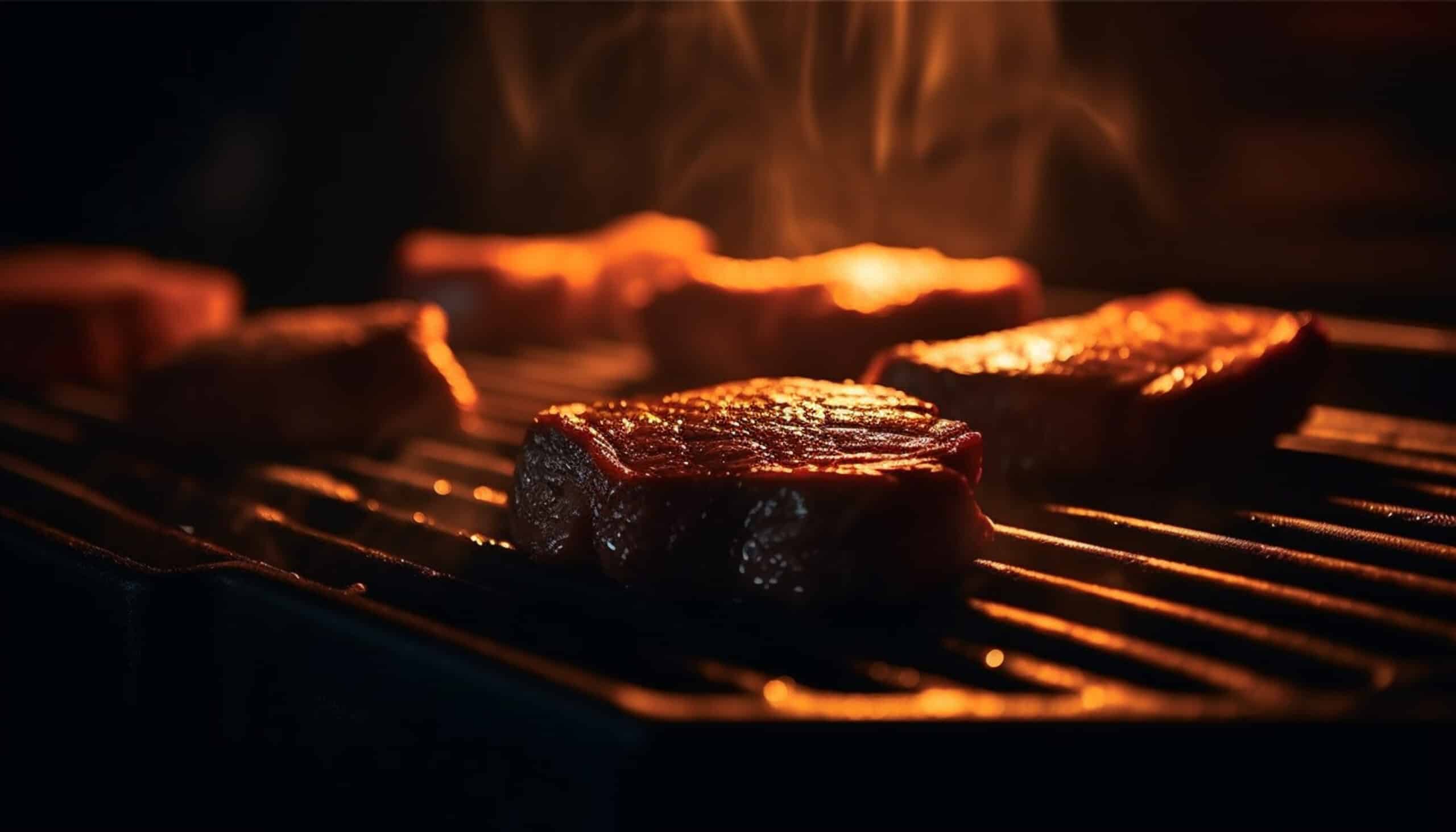How To Grill Steak On Gas Grill?
Key Takeaways
- Proper preparation is key to grilling steak on a gas grill, including salting the steak early and letting it come to room temperature before grilling.
- The grilling process involves preheating the grill, searing the steaks over direct heat, monitoring the internal temperature, and allowing the steak to rest before serving.
- Tips and tricks for grilling steak on a gas grill include using burners effectively to control heat, using a good thermometer to monitor internal temperature, cooking steaks to temperature rather than time, and cutting against the grain when slicing the steak.
Grilling steak on a gas grill is a popular and delicious way to cook this classic dish. Whether you prefer a juicy medium-rare steak or a well-done piece of meat, mastering the art of grilling steak on a gas grill can take your culinary skills to the next level. In this article, we will explore the best techniques and tips for grilling steak on a gas grill, as well as provide expert advice from various sources.
Preparation is Key
Before you start grilling your steak, it is important to prepare it properly. One common step recommended by experts is to salt the steak early. This allows the salt to dissolve and create a delicious crust on the meat. Salting the steak about 20 to 30 minutes before grilling is ideal.
Another important aspect of preparation is letting the steak come to room temperature before grilling. This ensures even cooking throughout the steak. Letting the steaks stand at room temperature for 20 to 30 minutes before grilling is recommended by grill masters.
The Grilling Process
Now that the steak is prepared, it’s time to fire up the grill. Preheating the gas grill is crucial for achieving that perfect sear and grill marks. According to the Food Network, preheating the grill to around 500 degrees Fahrenheit is a good starting point.
Once the grill is hot, it’s time to place the steaks on the grates. The Weber Grills website suggests starting by searing the steaks over direct heat. This helps to develop flavors and aromas and creates those coveted grill marks. After about 3 minutes, rotate the steaks a quarter turn to create crosshatch grill marks. Cook for another 3 minutes before flipping the steaks and repeating the process on the other side.
It’s important to monitor the steak’s internal temperature to ensure it reaches the desired level of doneness. Using a good thermometer is highly recommended. The Weber Grills website advises taking the steak off the heat before it loses too much moisture. This prevents overcooking and keeps the steak juicy and flavorful.
Resting the steak after grilling is another crucial step. Allowing the steaks to rest for about 10 minutes before serving ensures that the juices redistribute and the steak remains tender and juicy.
Tips and Tricks
In addition to the basic grilling process, there are a few tips and tricks that can elevate your steak grilling game. Hey Grill Hey suggests using your burners effectively to control the heat. This allows you to create different temperature zones on the grill, which is especially useful when cooking different cuts of steak or catering to different preferences.
Investing in a good thermometer is also essential for grilling steak to perfection. Weber Grills recommends using a thermometer to monitor the steak’s internal temperature accurately. This ensures that the steak is cooked to the desired level of doneness, whether it’s rare, medium-rare, medium, or well-done.
One important tip mentioned by My Chicago Steak is to cook steaks to temperature, not time. Cooking times can vary depending on the thickness of the steak and other factors. It’s crucial to rely on the steak’s internal temperature rather than a specific cooking time.
Finally, when it comes to slicing the steak, it’s advised to cut against the grain. This results in a more tender and enjoyable eating experience.
Conclusion
Grilling steak on a gas grill is an art that can be mastered with practice and the right techniques. Preparing the steak properly, preheating the grill, searing the steak over direct heat, monitoring the internal temperature, and allowing the steak to rest are all essential steps in grilling the perfect steak.
By following the tips and tricks provided by experts, you can elevate your grilling skills and impress your family and friends with delicious, juicy, and perfectly cooked steaks.
Related Websites:
FAQs:
Q: What are the benefits of grilling steak on a gas grill?
Grilling steak on a gas grill offers several benefits. Gas grills provide consistent heat and temperature control, allowing you to easily achieve the desired level of doneness. They are also convenient and quick to use, with fast ignition and easy cleanup. Additionally, gas grills offer a healthier cooking option as excess fat drips away, resulting in leaner and healthier grilled steak.
Q: How do I choose the best quality steak for grilling?
When selecting steak for grilling, there are a few tips to keep in mind. Look for steaks with marbling, which refers to the white streaks of fat running through the meat. This marbling adds flavor and juiciness to the steak. Additionally, consider the thickness of the steak, as thicker cuts tend to retain their moisture better during grilling. Finally, choose cuts of steak that are suitable for grilling, such as ribeye, strip steak, or filet mignon.
Q: Why is preheating the gas grill important?
Preheating the gas grill is crucial for achieving the perfect sear and grill marks on your steak. It allows the grates to heat up evenly, preventing the meat from sticking and ensuring even cooking. Preheating also helps to kill any bacteria on the grill grates, ensuring food safety.
Q: What is the ideal temperature for grilling steak?
The ideal temperature for grilling steak on a gas grill depends on the desired level of doneness. For rare steak, aim for an internal temperature of around 125°F (52°C). For medium-rare, target 135°F (57°C). Medium steaks should reach an internal temperature of 145°F (63°C), while well-done steaks should be cooked to about 160°F (71°C). It’s important to use a meat thermometer to accurately monitor the internal temperature.
Q: Why is resting the steak before serving important?
Resting the steak before serving is essential for optimal tenderness and juiciness. When the steak is cooked, the juices redistribute throughout the meat. Resting allows these juices to settle, resulting in a more flavorful and tender steak. It is recommended to let the steak rest for about 5-10 minutes before slicing and serving.






